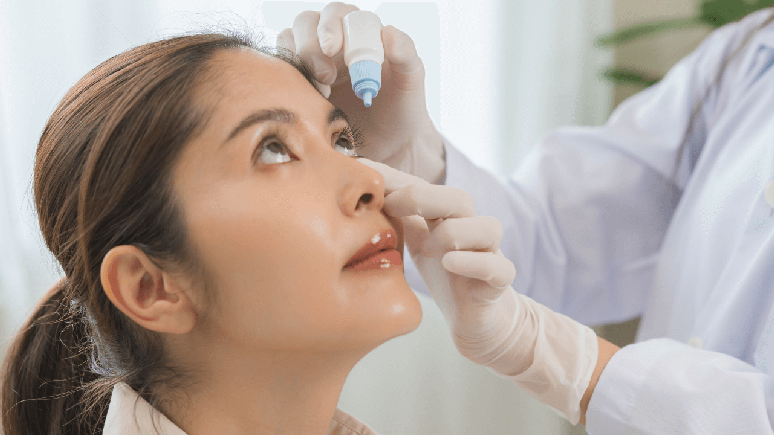The environmental crisis will be one of the themes of the Health and Wellbeing Summit, promoted by Estadão on October 21st
Droughts, floods, fires and heat waves – phenomena that have become increasingly frequent in Brazil – have a direct impact on people’s physical and mental health. children.
According to the Climate risk index for childrenfrom United Nations Children’s Fund (UNICEF)the country presents a medium-high risk, with over 40 million children and adolescents exposed to two or more risks. “More than 8.6 million Brazilian girls and boys are exposed to the risk of lack of water; and more than 7.3 million are exposed to risks resulting from river flooding” the agency reports in the document Children, adolescents and climate change in Brazil2022.
To guide families on how to recognize and prevent climate risks, Doctors for the Climate (a Brazilian movement that seeks to mobilize the medical profession in the fight against climate change), in collaboration with the Brazilian Society of Pediatrics (SBP), recently launched in booklet aimed at mothers, fathers and caregivers. We will also discuss the relationship between the climate emergency and health, a central theme of this initiative Health and Wellness Summit – The challenges of living longerpromoted by Estadao on October 21st.
Produced by professionals with regional expertise and extensive experience in pediatrics and public health, the booklet features chapters that link frequent climate events in each region of the country to concrete impacts on children: Floods in the South; intense rainfall and high temperatures in the South-East; heat waves in the Midwest; prolonged drought in the Northeast; AND fires in the Amazonin the Northern region.
Hot flashes, for example, can cause dehydration, with symptoms such as dry mouth, crying without tears, no urine or very dark urine, irritability and drowsiness. In younger children, the condition can cause the fontanelle to sink and their body temperature to rise, the booklet teaches. See more Here.
Children are more vulnerable
Due to rapid growth and development, basal needs during childhood lead to an increased need for oxygen and nutrients.
“Children consume more food, drink more liquids and breathe more air per kilogram of body weight than adults. In the first 10 years of life, they inhale, ingest and absorb through the skin more toxic substances per kilogram of weight than an adult. All this added to the lower ability to neutralize, detoxify and eliminate external contaminants causes adverse effects that will be more intense and persistent”, explains Marilyn Urrutia Pereira, from the SBP Planetary Health and One Health working group.
Pediatrician Renato Kfouri, ambassador of the Doctors for the Climate Movement who collaborated in the revision of the booklet, highlights that, in the case of respiratory diseases, there is a change in the seasonality of viruses, which now have different activity, frequency and distribution during the year due to the climate.
“Allergic diseases, such as rhinitis, bronchitis, asthma and sinusitis, are also aggravated especially by fires, unseasonal rains and increased pollution. This affects children who already have an allergic profile more intensely,” he says.
THE Pan American Health Organization (PAHO) points out that air pollution is associated with a large percentage of cases of pneumonia and asthma in children, worsening child mortality and morbidity in vulnerable settings.
Furthermore, for social reasons, many children live in contexts with precarious infrastructures, sanitation services insufficient and housing susceptible to flooding or extreme heat.
“There are still other important issues,” Kfouri points out, citing dehydration; extreme heat; the expansion of vector-borne diseases, such as denguechikungunya and zika; and risks associated with flooding, such as leptospirosis, hepatitis A, diarrhoea, worms and accidents with venomous animals, such as spiders and snakes.
The impact of extreme events also includes psychosocial effects: environmental disasters, displacement and loss of school routine have caused an increase in anxiety symptoms, behavioral regressions in young children and difficulties concentrating in class.
How to protect children
Among the recommendations for families’ daily lives are measures such as keeping children hydrated and sheltered in ventilated places during heat waves; avoid exposure to smoke from fires (close windows, reduce outdoor activities); identify signs of dehydration or heat stroke and seek prompt treatment.
Regarding strategies to deal with psychosocial effects, experts recommend trying to maintain stable routines even in shelters or after disasters (eating, sleeping, playing); explain what happened in age-appropriate language and seek support from health centres, schools or community groups.
Another point is participation in debates that can influence public policies. In this sense, the Doctors for the Climate Movement will deliver a letter of recommendations to the presidency of COP30 (30th United Nations Climate Change Conference)which will be held in November, in Pará, calling for health to be considered a central axis in climate negotiations.
“Climate-focused public policies must incorporate health – and, equally, the health sector must consider the impacts of climate in its actions. It is no longer possible to discuss diseases or treatment strategies without recognizing how climate change affects the physical and mental health of the population. An integrated approach is needed in public discussions and management decisions,” says Kfouri.
The “Health and Wellbeing Summit – The Challenges of Living Longer?” will be held on October 21, from 9:00 to 18:00, at Tivoli Mofarrej, in Sao Paulo. To register, go to this connection.
Source: Terra
Ben Stock is a lifestyle journalist and author at Gossipify. He writes about topics such as health, wellness, travel, food and home decor. He provides practical advice and inspiration to improve well-being, keeps readers up to date with latest lifestyle news and trends, known for his engaging writing style, in-depth analysis and unique perspectives.




![Un Si Grand Soleil preview: Thursday 16 October 2025 episode recap [SPOILERS] Un Si Grand Soleil preview: Thursday 16 October 2025 episode recap [SPOILERS]](https://fr.web.img6.acsta.net/img/23/e8/23e803cee5b560481303033f6e86fd7e.jpg)



